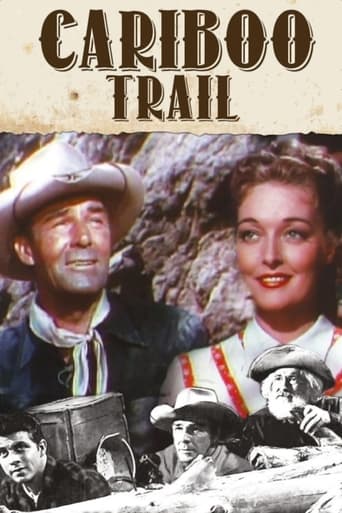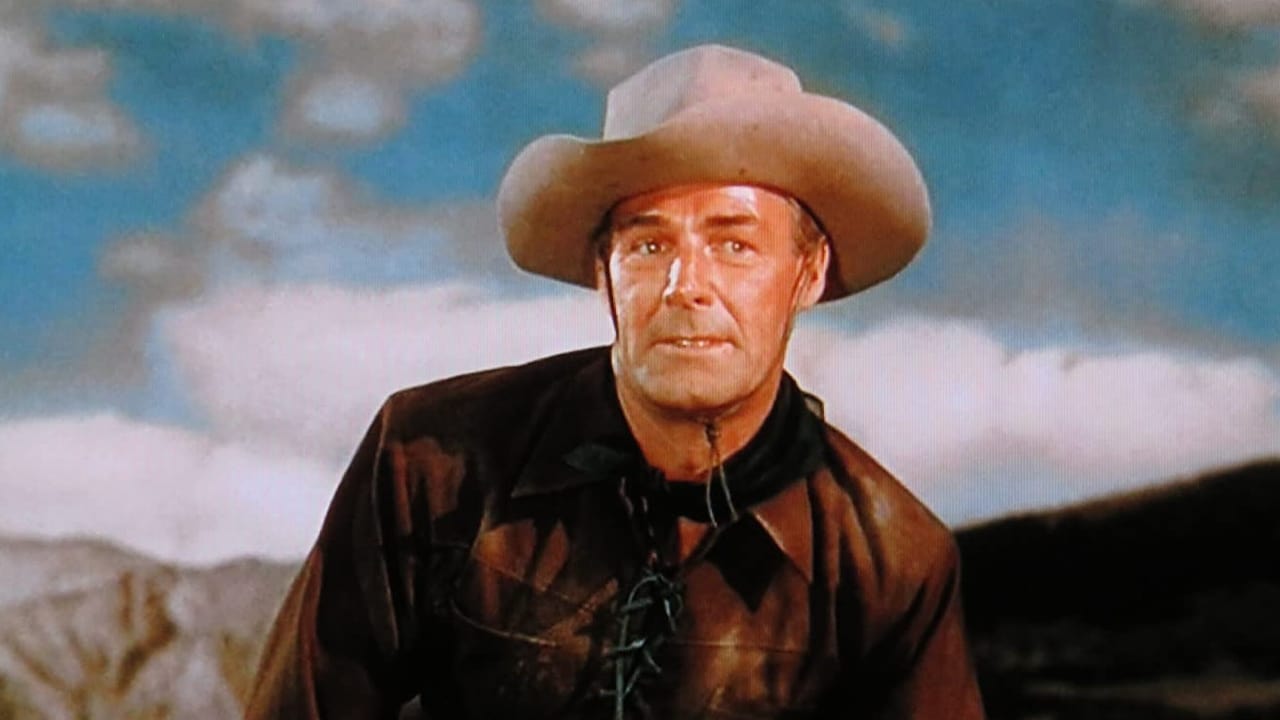mmcgee282
Like Canadian pacific,this film had a segment too near the end, that also only lasted a couple of seconds ,in which only one component survived.Because of that it was printed in black and white.The.German preservationist are too perfectionist.The color component of that segment survived in the Eastman color print ,which had no shrinkage ,compare too Canadian pacific. as far as the print as concern.The whole print was used for VHS version released by fries video in 1991.I got that.Why did the German preservationist use the color record of that segment from that print? The same with other? cause they were too perfectionist.The quality did not match the rest of the digitally restored color frames of the rest of the film.So what ? the fact that the color was available from other print it was important to keep the whole print in color constancy.U.c.l.a ,if they restored, it would of felt that way.It was only a few seconds,The quality of material available for the Restoration of Paramount on parade ,was also below quality of the t.v reedited version,but they used it.So was the material use in the finale of the talking version of Broadway ,1930.In spite of this the whole print is still very pleasing.When I saw Gabby Hayes reacting to Bill Williams arms being amputated by Randolph Scot ,after the cattle stampede ,cause by the bad guy,played by Victor Jory, It seemed that this character actor gave everything in his talent that would of deserve an Oscar nomination, but Cinercolor feature were viewed as low brow and the academy did not considered them.Like the other feature this also take place in Canada.I'm wondering if this was a part of promoting the Canadian film industry? Any how this was quite entertaining.This also include bonuses ,like the 8mm 8 minute edited version that was put out in the early 60's,in b and w.For a few cents more that company could of printed it in color, castle films. 11/24/16
frankfob
I won't bother to summarize the plot, as all of the previous reviewers have done so and there's nothing new I can add. As others have noted, this is not one of Scott's best films, or even one of his better ones. Director Edwin L. Marin has done some good westerns in the past--John Wayne's "Tall in the Saddle" comes to mind--but he doesn't seem to have had his heart in this one. Direction is perfunctory, performances are nothing special--although Bill Wiliams as a bitter one-armed cowboy has some good moments--and the action scenes are routine and not particularly well done. The worst thing about the film, however, is the photography. For some reason producer Nat Holt, who had done many of Scott's previous westerns, saw fit to use the cheap, crappy Cinecolor process for this film instead of the much superior Technicolor or Deluxe or even the chintzy Eastman Color, which would still have come out better than Cinecolor. The colors are muddy, everything is way too dark--even the day shots--actors' faces seem to fade into the background, and the major action setpiece takes place at night and the colors are so dark and muddy that, while the battle is certainly noisy, you can barely see anything.All in all this is a decidedly below-average Scott western. The lousy photography definitely detracts from the film, but it didn't really have anything going for it in the first place.
zardoz-13
Although "Tall in the Saddle" director Edwin L. Marin's "Caribou Trail" was filmed in color, the print that I saw on Turner Classic Movies is the black & white version. Western novelist Frank Gruber penned this oater from a story by John Rhodes Sturdy who had written the 1943 World War II naval epic "Corvette K-225." Altogether, "Caribou Trail" qualifies as a low-budget empire building western where the hero must triumph over a corrupt city slicker who owns an entire town, except for the saloon, before he can establish his ranch. By and large, this Scott western is fairly predictable stuff. The departure that sets "Caribou Trail" apart from most westerns is its treatment of a character that loses his arm during a cattle stampede.Jim Redfern (Randolph Scott of "Jesse James"), Redfern's partner Mike Evans (Bill Williams of "Rio Lobo") and their cook Ling (Lee Tung Foo of "Mission to Moscow") are driving 36 head of cattle north from Montana into Canada to build a ranch. Mike doesn't want to raise cattle; he came to prospect for gold. Redfern believes that cattle will flourish long after the gold has been depleted. After they cross the national boundary, our heroes find themselves at a toll bridge owned by the chief villain, Frank Walsh (Victor Jory of "The Capture"), whose henchmen want more money for their passage than Redfern is willing to pay. Mind you, Frank Walsh isn't around in this early scene, but his second-in-command Bill Murphy (Douglas Kennedy of "Dark Passage") is there. Anyway, Redfern refuses to pay the toll so Mike and he stampede their cattle and wreck Walsh's bridge. Once they are across, they encounter an old, bearded prospector Oscar 'Grizzly' Winters (George 'Gabby' Hayes of "Colorado") on the trail who catches a ride on Ling's wagon and cooks up some tasty grub for their first night under Canadian stars. Not long after they eat, they hear gunshots and unidentified rustlers stampede Redfern's own cattle. During stampede, Mike is injured and the town doctor must amputate his left arm. Mike didn't want to go to Canada in the first place and he blames the loss of his arm on Redfern. Meanwhile, after he exits the doctor's office, Redfern meets Walsh. Initially, he passed him on the way for a snort at the Gold Palace, the local bar run by a woman, Francis Harrison (Karin Booth of "Cripple Creek"), who has steadfastly refused to sell out to Walsh. Walsh, it seems, has his name on every business in Carson Creek. Eventually, Redfern and Grizzly have to sell their saddles for more grub and Redfern talks about getting a job. One of Walsh's former gunhands Bill Miller (Jim Davis of "Big Jake") shows up in town conveniently selling beef with Redfern's brand on it. They slug it out in Francis' bar and then Redfern guns down Miller outside in a fair fight. Redfern believes Walsh has been the source of his misfortunes since he refused to pay up at the toll bridge. Grizzly suggests that they prospect and Ling provides $300 of his hard-earned dollars. Our heroes head off to prospect in a mini-version of "Treasure of the Sierra Madre" with Gabby playing the Walter Huston role. By this time, Mike has recovered sufficiently to tangle with both Walsh and Murphy in Francis' bar, while Redfern discovers a cattlemen's paradise in the faraway mountains during his prospecting. A tribe of Blackfoot Indians appear and Redfern and company shoot it out with them, killing two of them before they capture them and take them back to their camp. During a pow-wow, Grizzly's mule Hannibal wanders into camp and Redfern uses Hannibal's kicking powers so our heroes can break out of the camp. Redfern snatches a rifle and a horse and then rides out. When he stops for water, he discovers gold in a stream. Redfern dishes out $900 worth of glitter, but there is only one person who can buy his gold. Walsh refuses to pay the full amount and charges Redfern $300 plus for cost of his damaged toll bridge. Murphy incites the citizens of Carson Creek against Redfern when he refuses to divulge the whereabouts of his strike. Redfern escapes just ahead of a mob and hits the frontier where he reunites with Grizzly. Grizzly has tied in with a group of Americans that are herding cattle. Redfern buys a 25 per cent interest in the herd. The cattle foreman is Will Gray (Dale Robertson of "The Silver Whip") Ling shows up at Francis' saloon and she hires him as a cook.Despite the loss of his left arm, Mike Evans has grown to be a threat to Walsh; he goads Walsh's henchman Murphy repeatedly to draw on him, and Murphy backs down. In one scene near the end of "The Caribou Trail," Evans shoots it out with two gunmen and sends the third running. Walsh forges a quick alliance with Blackfoot Chief White Buffalo (Fred Libby of "Three Godfathers") to stampede Winters' cattle, but Evans shows up like the cavalry to kill Murphy and Walsh before the mustached villain drills him. Redfern's escape from the Blackfoot camp seems more hilarious than dramatic despite the number of shots of a mule kicking Indians. Presumably, Marin and Gruber must have felt it wouldn't be fair for the Indians to shoot the mule. Meanwhile, the evolution of Mike Evans from a one-armed man to a one-armed army with his handy six-gun predated the likes of Joe Don Baker's one-armed gunman in "Guns of the Magnificent Seven.""Caribou Trail" is one of those oddball westerns set in Canada whereas one commentatorhas observed doesn't have any Royal Mounted Policemen intervening between the hero and the villains. Although it isn't especially memorable as many of Scott's later westerns, "Caribou Trail" clocks in at a trim 81 minutes and Marin neither wears out his welcome nor does he let the narrative drag.
bkoganbing
Randolph Scott is leaving the USA for the greener pastures of Canada's British Columbia. He wants to start a cattle ranch there with partner Bill Williams and cook Lee Tung Foo. They stampede their small herd over a toll bridge erected by Victor Jory. Later Jory rustles their cattle and Williams loses his left arm during the fracas.From 1945 until 1962 when he retired, Randolph Scott made a series of good adult themed westerns, some of them considered real classics. Unfortunately the Cariboo Trail will never be listed among his best westerns. It's more like the material that Roy Rogers or Gene Autry might use. The story is downright silly at times. Williams who was along for the ride with Scott, he wanted to go prospect for gold as there was a big strike at the time. He doesn't blame the rustlers, he blames Scott for convincing him to make the trip for the loss of his arm. Also there's a scene in the film when Scott, Lee Tung Foo, and Gabby Hayes are captured by Indians. They escape because Gabby's mule has been taught to kick on command and he kicks away at the Indians allowing our heroes to escape. I'm not sure that would have played in a Rogers film.Furthermore the story actually wants you to believe that tyro prospector Randolph Scott accidentally stumbles on a gold strike after just a few lessons from prospector Gabby Hayes on how to find gold. This was Gabby Hayes's farewell feature film part. It would have been better had he gone out in a good western and in fact he had done a couple of better ones with Randolph Scott before this.I will say this, though no Caribou made any appearance in the film, this is one of the few Canadian locale films from the past that did NOT have any Mounties. But if I were you unless you are a big fan of Randolph Scott or Gabby Hayes, take the next detour off The Cariboo Trail.



 AD
AD



